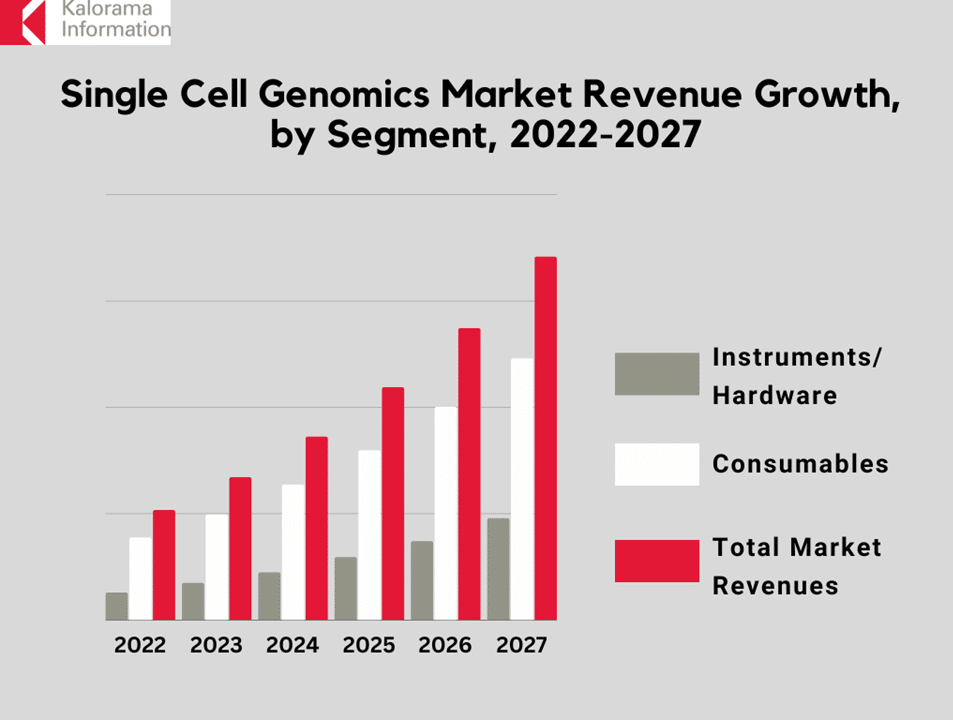Single Cell Genomics Market Reaches $1 Billion
After seeing products first introduced roughly a decade ago, the field of single cell genomics has experienced rapidly growing adoption in the last few years as evidenced by the market’s recent sales. In 2022, the total single cell market had sales of more than $1 billion and is forecast to grow exponentially in coming years, according to new medical market research published by Kalorama Information in the report Single Cell Analysis in Genomics: Next-Generation Sequencing and Other Technology, 2023-2027.
Development of single-cell technologies and computational methods has enabled systematic investigation of cellular heterogeneity in a wide range of tissues and cell populations, yielding fresh insights into the composition, dynamics, and regulatory mechanisms of cell states in development and disease. For example, single-cell DNA sequencing (scDNA-seq) has revealed remarkable cellular heterogeneity inside each tumor, significantly revising models of clonal evolution, whereas single-cell RNA sequencing (scRNA-seq) has shed new light on the role of tumor microenvironments in disease progression and drug resistance.
Despite the growing adoption of single cell genomics, the market is still considered technically challenging to the point of being cutting-edge, but companies are offering increasingly user-friendly systems. The types of techniques used for analysis include NGS, PCR, and microarrays. Various NGS applications represent the largest share, as they are increasingly seen as powerful new tools enabling labs to run powerful experiments at a lower cost, and to produce new types of data, which has opened up new possibilities in biomedical research.
Variation between cells is a property of most organisms. Cell types have different functions and express genes differently. Even within any single tissue, no matter how apparently homogeneous, there is a diverse population of cells, all of which represent different manifestations of that tissue type. Investigation of tissues or cell populations is inherently limited by the fact that the readout of any pooled assay that uses bulk tissue represents a weighted average of that population’s cellular constituents. Intrinsic cellular heterogeneity is obscured in the typical ensemble studies on which the canon of modern biology and medicine is constructed.
Single cell RNA-seq enables new types of analyses, for instance: understanding tumor heterogeneity and clonal evolution (including studying lineage analysis, cancer stem cells, and drug-resistant and metastatic clones), understanding complex tissues (e.g. neural tissues), high resolution identification of cell types and markers, and understanding differentiation pathways in developmental and systems biology.
Considering the market’s momentum, the single cell genomics industry is forecast to grow at a compound annual growth rate (CAGR) of 27.1% between 2022-2027. Presently, the market is led by the consumables segment, which accounts for 75% of industry sales. The instruments and hardware segment accounts for the remaining 25% of sales, but is expected to account for a slightly larger share by 2027.


